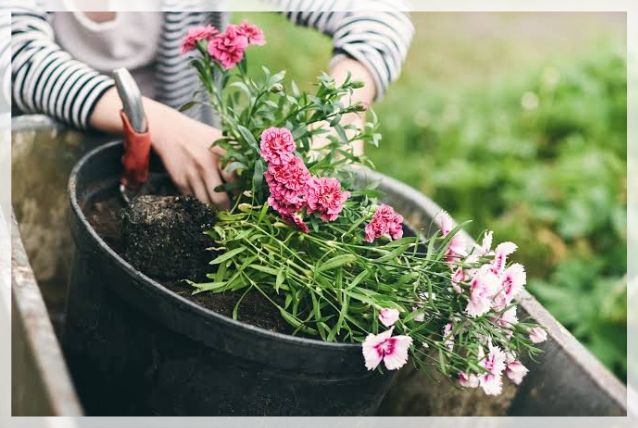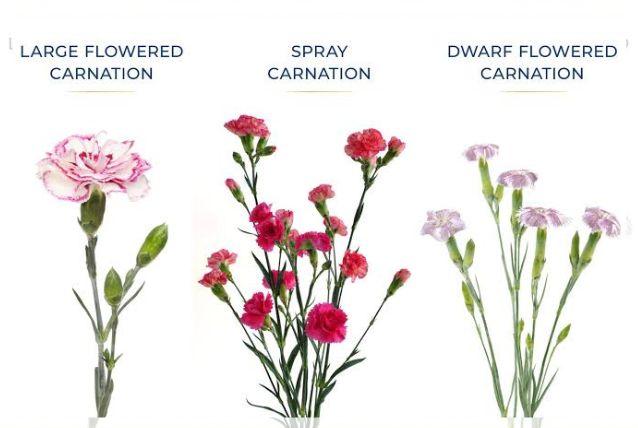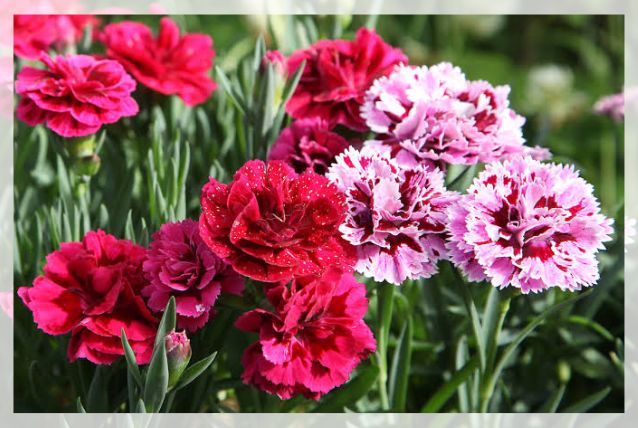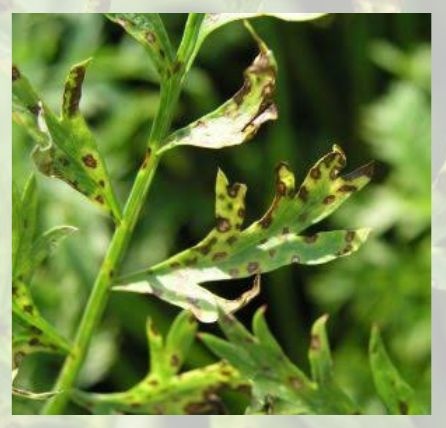Do you know that a carnation flower will add color to your yard or garden?
Carnations date back to ancient Greece and Roman times and their family name is Dianthus.
It is a Greek word that means “flower of the Gods“.
Carnation flower is a stunning and beautiful flower, however, you will need a little time, willingness to learn, and patience when growing them.
Though you may not know gardening, you can learn all you need to learn about carnation flowers.
Moreover, it pays off your hard work when you see the flower bloom.
If you have never grown carnations or any flower, don’t worry, you can always give it a try.
Keep on reading to learn more about a Carnation Flower in Detail.
Carnation Flower
Carnations also known as Dianthus, or Dianthus Caryophyllus is a perennial plant that you can often find and use as cut flowers.
It is important to note that these flowers are a variety of dianthus or pinks as their natural color range includes shades of pink, white, coral, and red.
However, white carnations are frequently dyed in a number of colors for holidays.
For instance, you can find green carnations for Saint Patrick’s Day or pastel colors for Easter.
While true carnation will have a ruffly appearance that holds its own in flower arrangements and will have a distinctive, spicy, faintly clove-like scent.
Moreover, these flowers have been cultivated for more than thousands of years, as you can find mentioned in the ancient Greek Test.
When you pin down its native locale, you may find it difficult.
But some botanists are of the view that it originated somewhere in the Mediterranean.
Dianthus translates from Greek, while Carnation is a Latin word that means “Crown” or “Garland”.
Learn more about Greenhouse Irrigation: Best Watering System here.
Quick Facts about Carnation Flower
Some quick facts about a carnation flower are:
| Botanical Name | Dianthus caryophyllus |
| Common Name | Carnation, pinks |
| Plant Type | Flowering perennial |
| Mature Size | 12-18 inches |
| Sun Exposure | Full sun to partial shade |
| Soil Type | Alkaline, fertile, well-drained |
| Soil pH | 7-8 |
| Bloom Time | late spring; reblooms |
| Flower Color | white, pink, red |
| Hardiness Zones | USDA 7-10 |
| Native Areas | Italy, Spain, Greece, Croatia |
Carnation Plant Care
It is important to note that these plants are easy to grow and care for. Dianthus carophyllus will do best in hardiness zones 7 to 10.
It is not as cold-hardy as other dianthus varieties, however.
Though, in some cases, dianthus is popular as a short-lived perennial, if they have the right growing conditions, you can expect them to grow for years.
Moreover, their fragrance will also stay for years to come.
There tend to be a stunning choice if you have a cottage garden with its vibrant colors and easy seasonal care.

Furthermore, deadheading them after the first bloom will help to insure re-blooming later in the same season.
They will thrive well without mulch, however, if you do mulch use a natural one instead of dye mulch.
It is important to note that these plants are deer-resistant, however, rabbits may enjoy nibbling on the leaves.
Soil and Light Requirments
A carnation flower will need excellent drainage and alkaline soil.
It is also referred to as “sweet soil”.
Alkaline soil will have slightly higher concentrations of calcium, magnesium, and soduium.
However, if your soil is acidic, you can add a bit of lime when planting carnations to get them off to a good start.
Though your plant will do best in full sun, carnations will also thrive in partial shade.
Too much bright afternoon sun can cause the petal of the brightly colored plants to fade away.
Moreover, plant your carnations where they can get the morning sun, then the afternoon sun, if possible.
If you want to keep the flowers looking fresh and colors bright, a morning sun is a must.
Learn more about Landscaping Rocks: Types and Uses here.
Water, Temperature, and Other Requirments
A Carnation flower plant is drought-resistant, however, it will need regular watering when the flower buds are forming in the spring.
During dry spells, however, in summer, they will need an extra drink of water.
Make sure to water at the base of the pant. Also, never over-water the plant.
Or the leaves may yellow and the flower petals may droop or fall off as a result.
Moreover, it is important to note that these plants love to thrive in warm environments, but can wilt in extreme heat.
They will do best in low humidity, however, an occasional light spritz of cool water during hot weather can help them cool down a bit.
One important thing to note is that carnations can be a source of mild toxicity if cats ingest them, causing vomiting and/or diarrhea.
Depending o how much your cat ingests it, it may vomit more than once.
Furthermore, the symptoms following vomiting can be mild dehydration or loss of appetite, however, these will often resolve within a few hours.
It is important to make sure that your cat has fresh water available.
Carnations also contain compounds that can cause mild skin irritations which may lead to redness or swelling around the mouth area if your cat eats them.
However, if more serious symptoms are there or your cat is not on mend after 8 hours, you should consult your veterinarian.
On the other hand, in dogs, poisoning from a carnation can present as dermatitis and digestive issues.
Carnation Flower Varieties
There are three types of carnations that are available to the home grower:
- large-flowered carnations, also known as standard carnations
- dwarf carnations
- spray or miniature carnations.
The following cultivators are a very small sample of the number of varieties of carnations that are available.

Chabaud Carnations: These are large standard carnations that come in a variety of cultivators including:
- “Jeanne Dionis” (white)
- “Benigna” (picotee white-edged with magenta)
- “Aurora” (range of medium to dark pink)
- “Orange Sherbet” (warm, deep coral)
- “La France” (classic pale pink)
Spray Cations cultivators include Elegance which is white-edged pink, Exquisite, which is white-edged purple, and Rony, which is scarlet red.
Moreover, some excellent smaller varieties with double-petal flowers are:
- “Appleblossom Burst” (shades of pink with deep red centers)
- “Double Bubble” (bright bubble gum pink)
- “Grace Bay” (found cream flower heads edged in magenta)
- “Rosy Cheeks” (medium pink with orange centers)
Growing Carnations from Seeds
In case you want to grow a carnation flower from seeds, you need to make sure to select cultivators that will be able to grow in your growing zone.
You can begin them indoors in a sunny window, six to eight weeks before the last frost in your area passes.
Then plant them in potting soil, sprinkling seeds over the surface and cover them very lightly with soil.
Make sure to keep them moist with the help of mist sprayers and wrap the planting containers loosely with the help of plastic.
This will help create a greenhouse effect.

The seedlings tend to germinate within 3 days. Moreover, once they form two to three leaves, you can put them in separate containers.
Make sure to let them get at least four to five inches tall before transplanting them outside once the frost season has ended.
However, it is highly unlikely that they will bloom in the first year.
Do so only if your growing zone is at least USDA 6 to make sure that they survive the winter as a perennial.
Common Pests affecting Carnation Flower
Some common pests that affect carnations are:
Mites: Spider mites are one of the most serious pests that can damage your flower.
Both nymphs and adults tend to suck on the sap from the undersurface of the leaves. As a result, the leaves tend to turn pale and have a dusty coating with fine webs.
However, in severe attack, the growth of the plant can become stunted.
Borer: This moth tends to lay eggs in the buds and the larvae eat into the buds damaging them completely.
As the larvae feed on leaves, flower buds, and flowers, they make round holes in them. The infested buds, as a result, fails to open.
Moreover, the attack by this pest is often during warm conditions.
Thrips: They suck the sap from the leaves, thus leading them to turn yellow and patchy with black specks and slight wrinkles.
They also cause streaks in flowers.
White fly tends to affect in summer, while leaf miners affect the plant all around the year.
Aphids: Nymphs and adults tend to suck the sap and feed on flower buds, leaves, and terminal shoots, and can also transmit some plant viruses.
Learn more about Organic Pest Control
Common Problems
Some common plant problems are:
Rust: You can see forming small blisters, containing rust-red spores on the leaves, while it is more noticeable during cool nights alternating warm humid days.
To treat it, you will need to use healthy planting material, and clean and sterilize gardening tools.
Carnation Wilt or Fusarium: It affects the foliage of the plant and causes wilting, and rotting of the stem below the ground level.
Make sure to use sterilized material when using it on the plant.
Floral Blight: This one is a fungal disease and appears as a tan to light brown soft rots on the pets of the flower buds and open flowers.

Moreover, the affected petal will be covered with the grayish growth of the fungus filaments which are later covered by a powdery mass or grayish spores.
Die Back tend to occur in high temperatures and high humidity and you can treat with by removing the affected flower stem.
Viral Diseases: Common viral diseases affecting carnation flowers are streak, mosaic, mottle, ring spot, etched ring, and vein mottle.
Apart from the above, damping off in cutting, leaf spots, blight in leaves, stem rot, and root rot, and drying lower leaves in older plants are also plant diseases that can affect your plant.






Leave a Reply